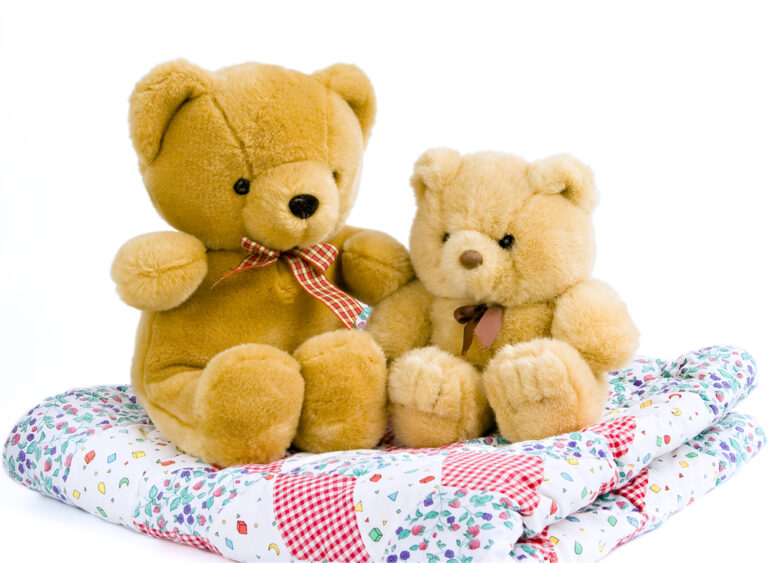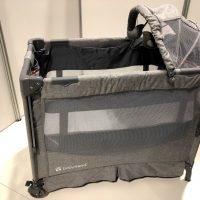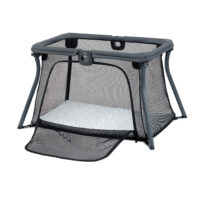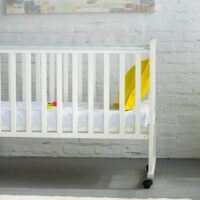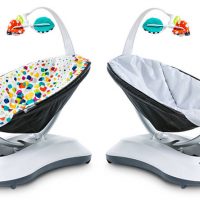Knowing the right size for a baby quilt or blanket will help you find the best option for a crib or toddler bed. Take a look at the various factors as baby quilts and blankets come in different sizes depending on if they are store-bought or handmade.
Handmade Size of a Baby Quilt or Baby Blanket
When someone gives your baby a handmade baby quilt or blanket, they are giving them some love and a tiny piece of their heart. What makes handmade blankets so special is they take time and effort to make along with money.
A crocheted blanket takes between four and eight skeins of yarn. A skein of yarn can cost anywhere from four dollars to twenty dollars, depending on the quality and material. Baby blankets that are handmade are often equal to or more expensive than a blanket you can buy in the store.
Most people make a baby quilt around 30 to 60 inches with a vast variety of other sizes and shapes. Every baby blanket pattern has a different size. Even between crochet, knit, and sewing, there can be a large variety of sizes.
Moreover, each person has a different gauge, and the blanket they make may not come out the same size giving you an off-size blanket. Not much can be done with a handmade quilt that does not meet an industry standard, so simply love the size you get. More often than not, you will find a use for the blanket and probably love it more than any store-bought blanket.
Store-Bought Size of a Baby Quilt or Blanket
Store-bought blankets also come in a wide range of sizes. Overall, the blankets measure about 28 by 52 inches to lay loose in a crib. However, some blankets and quilts measure much larger and others smaller.
Another common size is around 33 by 43 inches, which does not fit very well in a crib and works best for floor use.
On average, swaddle blankets measure between 40 by 40 to 48 by 48 inches, respectively. Receiving blankets are around 18 inches by 36 inches. A crib blanket can measure around 40 to 60 inches, and multi-use blankets measure around 30 to 40 inches.
Different Types of Blankets
Beyond quilts and blankets for the crib or toddler bed, you can also buy swaddling and receiving blankets. Swaddling blankets are perfect for wrapping a baby tightly for a womb-like experience. Many babies need swaddling for the first few months to help them fall asleep.
Receiving blankets are much thinner than typical blankets and are handy for a variety of reasons. Many people use them in diaper bags as they fit better than other blankets. Also, people use them as an impromptu changing pad, burp cloths, travel blanket, to cover a car seat, and a wide variety of other purposes.
Furthermore, receiving blankets are smaller too, measuring as small as 18 by 18 inches and as large as 36 by 36 inches. They make a great option for premature babies as they are smaller and easier to wrap around a baby.
Knowing the Size of a Crib Mattress
The federal government regulates crib mattress sizes under the Consumer Product Safety Improvement Act of 2008. According to this act, crib mattresses need to measure a minimum size of 27 1/4 inches by 51 5/8 inches. The thickness of the crib should not exceed six inches. Standard cribs measure 28 inches by 52 inches for a more universal measurement.
If you prefer a mini crib, those measure 24 inches by 38 inches. Some cribs also come in unique shapes, but these are not regulated by the government.
As most crib sizes are 28 inches by 52 inches, most crib blankets will measure similarly. Of course, this depends on whether the blanket tucks in or sits on top of the mattress. Also, crib mattresses can vary some as long as they measure at least the minimum.
Safety of Baby Bedding
Baby quilts and blankets should actually not be in the crib with your baby. It’s best to use baby quilts and blankets on the floor or with complete supervision as they can be a safety hazard and even lead to SIDS.
Babies should be put to sleep on their back on a firm flat surface with tight-fitting sheets. Keep all loose toys, blankets, clothing, and pillows out of your baby’s room. Babies should actually sleep with a wearable blanket instead of with a baby quilt or blanket.
Although quilts and blankets should not go in a crib with a baby, it does not mean they are useless. Baby blankets and quilts can be in a crib for decoration when the baby is not in the crib. The added decor adds to the beauty of the room and makes for gorgeous pictures.
Furthermore, baby bedding can be used on the floor, the car, around your baby, when in your arms, and in many other places. Bedding offers comfort, warmth, and the feeling of love, making them unbelievably important even if you cannot use them in the crib while your baby sleeps until after their first birthday.
Moreover, people love to give blankets and quilts to babies as they offer so comfort and contentment. When someone gives a blanket, they are offering some of their own warmth to comfort another human in a physical form. Simply having a plethora of baby bedding adds snuggly goodness to your home.
How a Baby Quilt or Blanket Should Fit
As bedding beyond a fitted sheet should not be a baby crib, there is no correct fit for the blankets. Many people prefer bedding to fit snuggly for aesthetic purposes, while others prefer draped and loose. So long as the baby is not in the crib, put the bedding in any way you prefer.
Do make sure to take the bedding out of the crib before putting the baby in the crib. When your baby moves out of a crib and into a toddler bed, you can then use the bedding. Never use bedding for a baby who cannot roll over and stand up unless it’s attached.
Thickness
Baby blankets come in a variety of thicknesses but should never be as thick as an adult blanket. Additionally, babies should have thin blankets as they are better for them. Babies cannot regulate their own temperature, so it’s better to have layers you can remove if necessary for the optimal temperature.
Keep baby blankets and quilts that are thin and breathable for actual use. Save the thicker blankets for floor time or as decor.
Requesting Sizes for Gifts
People often love suggestions when it comes to buying gifts. If you want a specific size, then ask for a specific size. Alternatively, you can ask people not to get baby blankets as you are after a specific size.
Make sure to offer alternatives if you do not want a blanket of any sort. Do not be shocked when people do not listen, though, as many people love to make gifts for babies and have preconceived notions of what to make even if it does not line up with your point of view.
Final Thoughts
Most things you can buy in the store come in standard sizes with mild variations. Baby blankets are no different.
Baby quilts measure between 28 by 40 inches to 36 to 52 inches.
Crib quilts measure between 30 by 50 inches to 36 by 52 inches.
Toddler quilts often measure larger at 46 to 60 inches to drape over the toddler bed.
As you can see, baby quilts come in a variety of sizes. Here’s our tip: get a multitude of sizes as you never know which will work best for your baby.
If you want a specific size, speak up and let the people in your life know so they can help you look for this size. Also, remember babies need to sleep in a blanket-free environment for safety and to prevent SIDS.
Finally, always remember to appreciate a handmade blanket or quilt, even if it’s in an odd size. These blankets took time, money, effort, and love to make making them more special. Cherish your baby and share your warmth in the form of many blankets in a variety of sizes and shapes.
